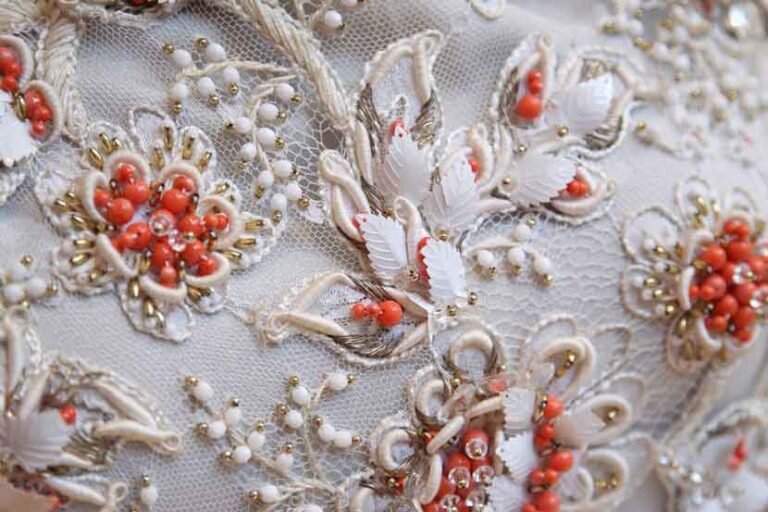Discover special king of Iranian embroidery

TEHRAN – For centuries, Monjugh-Douzi, which is a special skill of Iranian embroidery, has been applied to ornate clothing, head wears, money bags, decorative tableaus, pencil holders, cases of stamps or brushes, bags, covers of boxes or utensils, belts, necklaces, anklets, coasters to name a few.
The know-how of this delicate handicraft has been passed down from generation to generation from ancient times.
There are some historical documents and evidence that prove this art was quite popular during the Achaemenid and Sassanid eras. Back then tents, carpets, and garments were ornated by Monjughs, however, it was a custom specific to aristocrats.
Gradually the material for making Monjugh changed from gemstones to glass and they turned into a craft practiced and used by ordinary people.
According to Visit Iran, Monjugh-Duzi is the art of sewing Mojugh beads to fabrics. The first step is to pass the beads through yarn by using a needle and then, sew them to the fabric based on the pattern. There are a lot of patterns and motifs that can be applied in Monjugh-Duzi such as “Gol o Morgh” (flower and bird), “Gol o Buteh” (flower and bush), kinds of paisley, birds, animals, hunting grounds, geometric, trees, cypresses, arabesque, “Toranji” and “Sar Toranji”, “Sar Lachaki”, “Shamsehee”, “Bazubandi”, “Band Rumi”, “Shah Abbasi”, knots, patterns from Kelims, holy names, etc.
Monjughs are most commonly sewed to thick silk, satin, and other shiny fabrics in different colors, and in styles such as “Khati” or linear, “Tupor” where the motif is filled by Monjugh, “Bast-Duzi”, “Cobareh-Duzi” and “Barjesteh-Duzi” or embossed. Sometimes it is used along with other embroideries like “Gheytan-Duzi” that is done by thick yarn, or with silk yarn, sequins, pearls, and filigree.
Small beads being sewed to clothing and other textiles, Monjughs became highly popular in the late 20th century, during the Qajar era. Some of the valuable and elaborate Monjugh-Duzi pieces of this era are kept in the Decorative Arts Museum of Iran and can be visited.
AFM

Leave a Comment